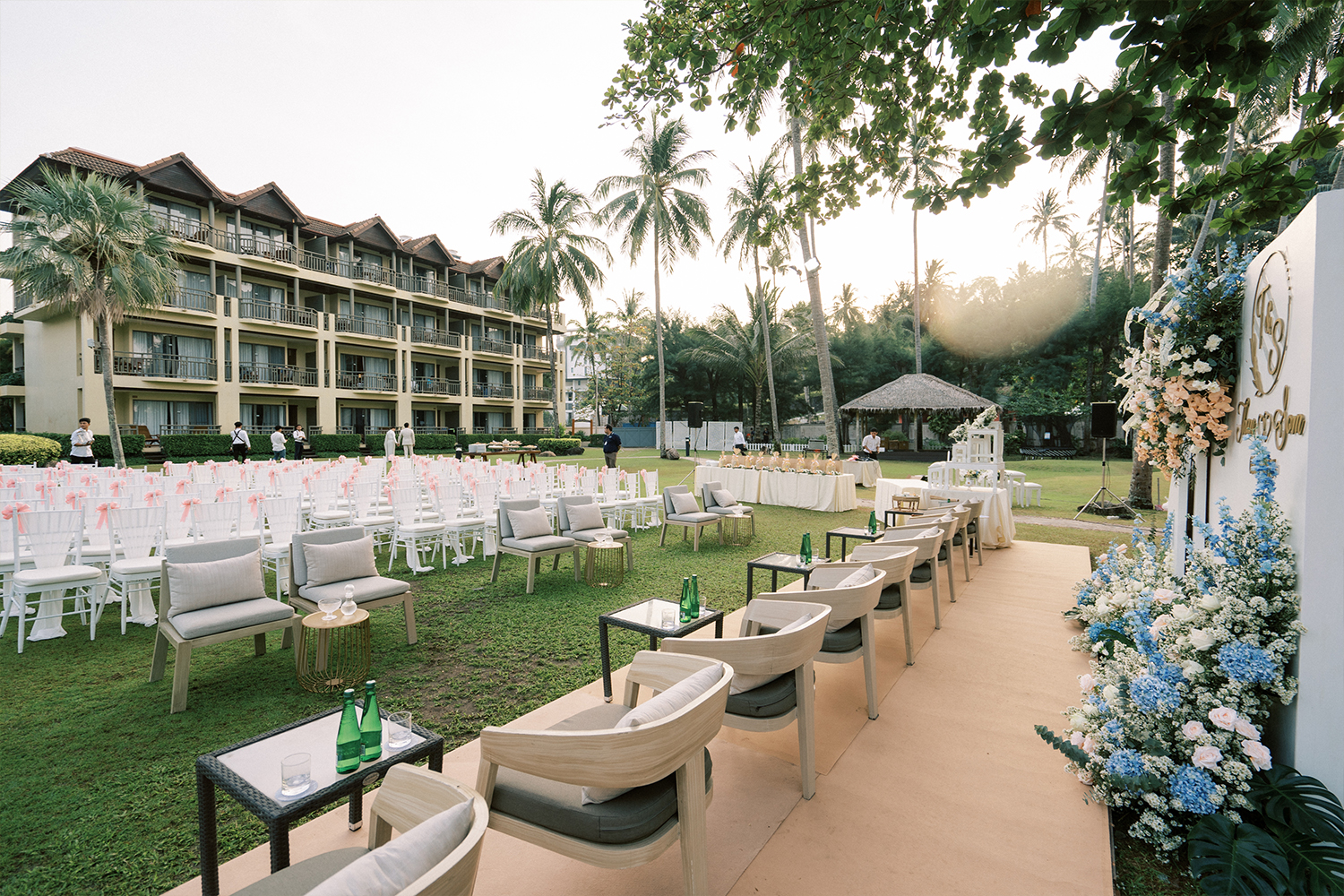


The Thai Wedding Ceremony
The Glamorous Wedding is the Thai brand who can create your dream of the real traditional Thai-style architecture surrounded by peaceful and exotic nature.
The Glamorous Wedding tailor-made the Thai-ness ceremonies such as; Buddha’s blessing ceremony (make merit), Khan Mak with super energetic and entertaining parade, proposal and marriage, engagement, water-pouring ceremony, pay respect to elders and sending-off the bride and groom to bridal bed.
The Thai Wedding Ceremony
The Thai wedding ceremony is a richly detailed process steeped in tradition. For those unfamiliar with the practices, the following outlines the essential steps:
Happily Ever After
Make Merit to Start
The Ceremony (Religious Ceremony)
On the morning of the wedding day, it is customary for the bride and groom to invite nine monks—considered a lucky number in Thai belief—to their home. They serve food to the monks, who then offer blessings for happiness and prosperity in the couple's marriage.
Khan Maak Procession
Following the religious ceremony, the groom leads a Khan Maak procession to the bride’s home.
This parade typically includes two types of Khan Maak:
Khan Maak Ek: Comprising dowry items such as betel nuts, betel leaves, gold and silver bags, green peas, black sesame seeds, popped rice, and paddy.
Khan Maak Tho: Featuring nine auspicious Thai desserts, including flower egg yolk tart, round egg yolk tart, and shredded egg yolk tart.
Barring the Groom
Upon arriving at the bride’s house, the groom must pass through symbolic doors (often pink gold, silver, and gold), which are constructed by the bridesmaids and the bride’s family. The groom must fulfill certain conditions, such as offering money or performing a task (e.g., declaring his love for the bride), to be allowed entry.
Proposal and Marriage
After retrieving the bride from her bedroom, the groom and bride’s parents count the dowry. Green peas, sesame seeds, popped rice, and paddy are then scattered over the dowry. The bride’s mother holds the dowry on her shoulder, pretending it is heavy due to its substantial monetary value.
The Engagement
At an appropriate moment, the bride and groom exchange engagement rings, symbolizing their formal commitment to each other.
Water Pouring Ceremony
This is a pivotal part of the Thai wedding ceremony. The bride sits on the groom’s left, with ceremonial hairdressing in place. Guests use a conch shell filled with water from the religious ceremony to pour over the couple’s hands while offering their blessings.
Pay Respect to Elders
Respect for elders is integral to Thai culture. The bride and groom sit before their parents or family elders to seek their forgiveness and blessings. The parents then tie holy threads around the couple’s wrists and present valuable gifts, such as money or gold necklaces.
The Nuptial Bed
The final step involves the groom waiting in the bridal room until the bride arrives with her parents. The parents may invite a successful and happily married couple to prepare the nuptial bed with two pillows and auspicious items, including a mortar and pestle, winter melon, an old male cat, beans, paddy, and a bowl of rainwater, symbolizing a prosperous and harmonious marriage.
This comprehensive process not only celebrates the union of the couple but also honors traditional customs and cultural values.






